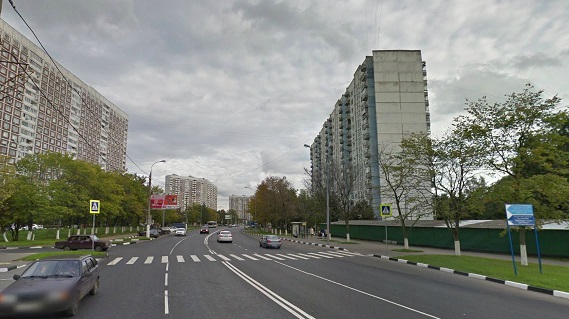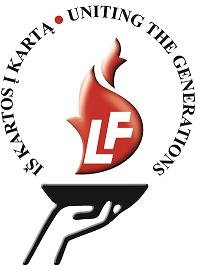Large cities of Russia: Moscow, Saint Petersburg, etc.
The main Russian cities have a multitude of locations related to Lithuania and its history, many of them dating to the Soviet and Russian Imperial eras when Russia ruled Lithuania.
Moscow and Saint Petersburg - two Russian capitals - still have reminders that for 170 years Lithuania was ruled from there: buildings, museum exhibits, street names and historical places.
Soviet era Lithuanian heritage in Russian cities
The Soviet genocide of Lithuanians (1940-1953) and related mass expulsions to Siberia are the most infamous Soviet action in Lithuania. However, after 1953 many Lithuanians were relocated to major Russian cities willingly or semi-willingly.
Moscow and Saint Petersburg were considered to be prestigious places to live at the time as there had been less shortages, better healthcare and education, more impressive architecture, etc. Only a minority of those wishing so were allowed to live there and this included some Lithuanians, a significant part of them collaborators with the Soviet regime.
Tens of thousands other Lithuanians were moved as simple workers to the smaller Russian cities. Unlike the victims of the 1940-1953 expulsions the people transfered later were given a place to live and had to work in similar conditions to other local workers rather than as slaves.
The new Lithuanian communities however largely remained anonymous and intermingled with others: any promotion of non-Russian culture outside the "titular homeland" (Lithuanian Soviet Socialist Republic in case of ethnic Lithuanians) was heavily discouraged. Lithuanians were expected to become part of the Russophone whole as they used Russian schools, theaters and media without a possibility to converse in Lithuanian outside of the immediate family. Buildings constructed by Lithuanians thus could not be distinguished from those built by the other ethnicities in the same cities, no Lithuanian memorials were allowed to be built. This is in striking contrast to Russians in Lithuania who had their schools, memorials and cultural institutions even in cities where they were a small minority.
Lithuanian embassy in Moscow (Borisoglebskiy pereulok) also dates to the era and its somewhat historic. It has been built as a representative office of the Lithuanian Soviet Socialist Republic. Every Soviet Socialist Republic used to have such an office before 1991. Lithuanian communists and factory representatives would live there when visting Moscow for political purposes. Therefore, atypically for an embassy, it still owns a large multistorey hotel.

Facade of the Lithuanian embassy in Moscow (left). Google Street View.
Lithuanian SSR also owned a pavillion in the All-Union Agricultural Exhibition (subway station "Vystavochnyj Centr"). This exhibition has been opened in 1935 but as Lithuania was still independent at the time (occupied in 1940) the Lithuanian pavillion has been constructed in 1954 when the exhibition had been reopened after World War 2. Every Soviet-ruled country presented its agriculture and industry in this exhibition. Lithuanian pavillions (like most others) is built in then-mandatory Stalinist (a.k.a. Socialist Realist or Soviet Historicist) style that mixed grandeur with historic details. However the building has been designed by Lithuanian achitects (A. Kumpis, J. Lukošaitis, K. Šešelgis), therefore unlike the "internationalized" buildings elsewhere it had national elements. Tricolors and other Lithuanian patriotic symbols had been banned thus the architects expressed Lithuanian heritage through folk patterns and Baroque forms (at the time Baroque was held to be the most Lithuanian among the Western styles due to its prevalence in Vilnius Old Town). The Exhibition has been closed in 1964, leaving Lithuanian pavillion to be used as a chemistry museum (the communist sculpture that crowned the top has been removed however).

Lithuanian pavillion while the exhibition was still open. Original image.
The exhibition area aso has a fountain dedicated to the "Friendship of Nations" (whcih supposedly existed in Stalinist Soviet Union). In this fountain every one of the 16 major nations which had their own Soviet republics is represented by a single sculpture (Lithuania is represented by a girl).
In order to present Lithuania as a part of the socialist eastern world many streets and other locations in the new micro-districts of Soviet cities have been named after Lithuania (Litovskiy, Litovskaya). These names largely remain.

Lithuanian street in Moscow. Like in nearly every late-Soviet district most buildings here look similar to the resdientials in any other Soviet city. There are no Lithuanian elements save for name. Google Street View.
Lithuanians themselves however used whatever means they had to show the world that Lithuania is ilegally occupied. For example, Stanislovas Žemaitis self-immolated in Moscow's Revolution square (Ploshchad' Revolyutsii) in 1990 protesting the Russian blockade of Lithuania. However this and other places of pro-Lithuanian protests remain unmarked. One exception is the painting "Danaë" by Rembrandt in the Saint Petersburg State Hermitage museum. The painting has been heavily damaged by a Lithuanian Bronius Maigys who attacked it with acid and knife in 1985. He targetted the Hermitage as a symbol of Russian state power. The now-restored painting has a comment about the attack underneath - however, it claims the attacker to have been "a maniac" (as the people who disagreed with the Soviet regime used to be called at the time).
Lithuanian heritage in Czar-era museums and culture
The major Russian museums also have some pretty things associated with Lithuania - however Lithuania is usualy represented as a part of Russia. This is because such museums were established before 1915 when Lithuania was ruled by Russian Empire. The Russian Ethnography Museum in St. Petersburg (4/1, Inzhenernaya Ulitsa) has Lithuanian ethnic materials (folk costumes, etc.) next to similar materials of other ethnic groups of the former Russian Empire. Russian Museum (est. 1898, 17 Nevsky Prospekt) of Fine Arts hosts works by Mikalojus Konstantinas Čiurlionis, the most famous Lithuanian painter.
Back in that era the Czar's regime decided to keep Lithuania an agricultural hinterland. Therefore Lithuanians had to seek education and careers jobs abroad. Many Lithuanian scholars, artists and scientists chose Saint Petersburg, the capital of what was then the Russian Empire. Even the final prerevolutionary Catholic bishop of Saint Petersburg was an ethnic Lithuanian (Teofilius Matulionis). To this day Saint Petersburg University of Philology has a Baltic languages faculty. After 1918 most Lithuanians returned to build newly indpendent Lithuania however.
1897 Russian census ennumerated 300 000 migrants from Lithuania in Russia. However, most of them were ethnic Jews. Unlike largely peasant Lithuanians, most Jews were craftsmen and businessmen and felt little attachment to the land. Lithuanian and Russian cultures were equally foreign to them and the Russian cities offered more economic opportunities. After migrating there most Lithuania's Jews swiftly assimilated into the Russian Jewry without keeping any ties with Lithuania.
Knowing the recent history it may be hard to believe that once the Russian state was smaller than (the Grand Duchy of) Lithuania. Kazan Cathedral on the corner of the Red Square has been built in 1625 (demolished 1936, rebuilt 1992) to mark the forced departure of Poland-Lithuania forces that had previously taken Moscow in support of a throne-claimant Dmitriy. This happened in 1612 and was one of the very few times in history that Moscow was entered by foreign troops. In 1818 a statue for Kuzma Minin and Dmitriy Pozharski who led the fight against Poland-Lithuania was erected in the Red Square, it is now located in front of St. Basil's Cathedral and remains the sole sculpture in the Red Square.
Modern Lithuania-related places in Russian cities
The collapse of the Soviet Union ended Lithuanian migration to Russia, however the Lithuanians who lived there were finally able to practice their culture more freely, even if without the government support.
Myakinino suburb of Moscow has a Lithuanian cuisine restaurant "Gedimino dvaras" ("Gediminas's Manor") at 4-Myakininskaya 27A, near Strogino and Myakinino metro station. It has been opened in 2011 by two Russians Veronika and Igor Bezuglovs, who met each other in a local reality TV show.

Lithuanian restaurant Gedimino Dvaras in Moscow. Google Street View.
Since 1992 a Lithuanian Jurgis Baltrušaitis school works at Gospitalnij per. 3 in Moscow. Unlike the Russian minority schools in Lithuania however the Moscow's Lithuanian school does not use the minority language for instruction. All lessons are in Russian, however Lithuanian language is taught as an additional subject (these lessons funded by the Lithuanian sgovernment). The building has been built in 2005 but there are no Lithuanian architectural details. Jurgis Baltrušaitis was a long time Lithuanian ambassador to Russia in the interwar period.
Today Moscow has ~2000 Lithuanians. Saint Petersburg has ~3500 Lithuanians, a Lithuanian house (actually an apartment) and Lithuanian Catholic mass in the Seminary church (Krasnoarmeiskaja 11). Lithuanian communities also exist in Murmansk, Smolensk, Vladivostok, Samara, Omsk, Tomsk, Medvezhegorsk.






Leave a comment